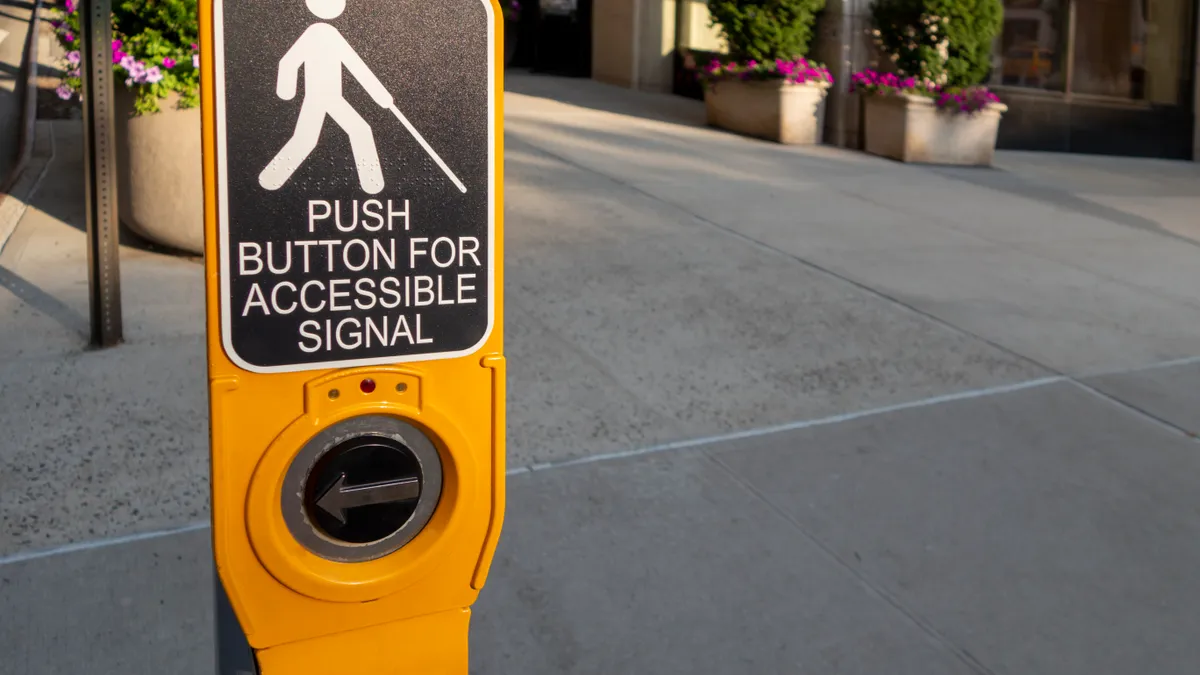A federal judge found the city of Chicago liable for violations of the Americans with Disabilities Act and the Rehabilitation Act “by failing to provide accessible pedestrian signals at signalized intersections throughout the city to those who are blind or have low vision,” according to a Justice Department press release Wednesday. Accessible pedestrian signals give pedestrians safe-crossing information in a non-visual format, such as through audible tones, speech messages and vibrating surfaces, the DOJ said.
Judge Elaine Bucklo, writing for the U.S. District Court for the Northern District of Illinois, said in a summary judgment that the facts of the class-action lawsuit were “essentially undisputed,” as the city never claimed that “’the provision of APS at 3.4% of its signalized intersections affords the blind meaningful access to its network of traffic signals.’”
The city defended itself by claiming it planned to install more APS at some of its over 2,800 signalized intersections. But Bucklo rejected that defense, noting that the city had installed less than 40 of the 100 APS it promised to install by 2021. “If the undisputed record establishes anything, it is that the City’s plans in this area have not come to fruition,” the opinion says.
Bucklo’s opinion makes clear that the city is liable because it didn’t “satisfy the program accessibility standards for either existing or new construction” and failed “to make reasonable accommodations to ensure that blind pedestrians have meaningful access to its pedestrian signaling services and to ensure evenhanded treatment of blind pedestrians in its traffic communications.”
According to Disability Rights Advocates, a nonprofit legal center involved in the lawsuit, the city must, as a result of the decision, install APS when building or modernizing an intersection’s pedestrian signals. The advocacy group heralded the decision in a press release, claiming it would “reshape Chicago’s pedestrian infrastructure and lead to historic accessibility improvements for all residents.”
“We are thrilled the court recognized that blind pedestrians have the right to cross streets with the benefit of the same critical public safety information as sighted pedestrians,” said Jelena Kolic, senior staff attorney at DRA, in a statement. “Chicago has long been famous for its walkability. Thanks to this decision, blind residents will be much better equipped to enjoy that walkability.”
The case dates back to 2019, when DRA and law firm Proskauer Rose — on behalf of the American Council of the Blind and three individuals — filed a class-action lawsuit against the city and the Chicago Department of Transportation over the city’s lack of APS following the city’s July 2019 announcement that it would expand the number of APS from 11 to 100 within two years. The Justice Department intervened in April 2021, alleging “the city fails to provide people who are blind, have low vision or are deaf-blind with equal access to pedestrian signal information at intersections,” it stated in a press release.
According to DRA, less than one-half of 1% of Chicago’s signalized intersections have APS. “This level of access may be the worst of any major metropolitan area in the United States. As a result, blind and low vision pedestrians are put in danger of crossing against the light, in the path of cars, every time they cross a street without APS,” DRA said in its statement.
Road safety advocates and local, state and federal policymakers are increasingly concerned about pedestrian injuries and deaths following an uptick in recent years. According to National Highway Traffic Safety Administration estimates, fatalities increased 2% among pedestrians during the first nine months of 2022 compared with the same period in the year prior. Chicago is testing new parking enforcement technology and smart loading zones to address its rising traffic fatalities, which climbed more than 50% between 2019 and 2021.
The city did not respond to a request for comment as of Friday.











